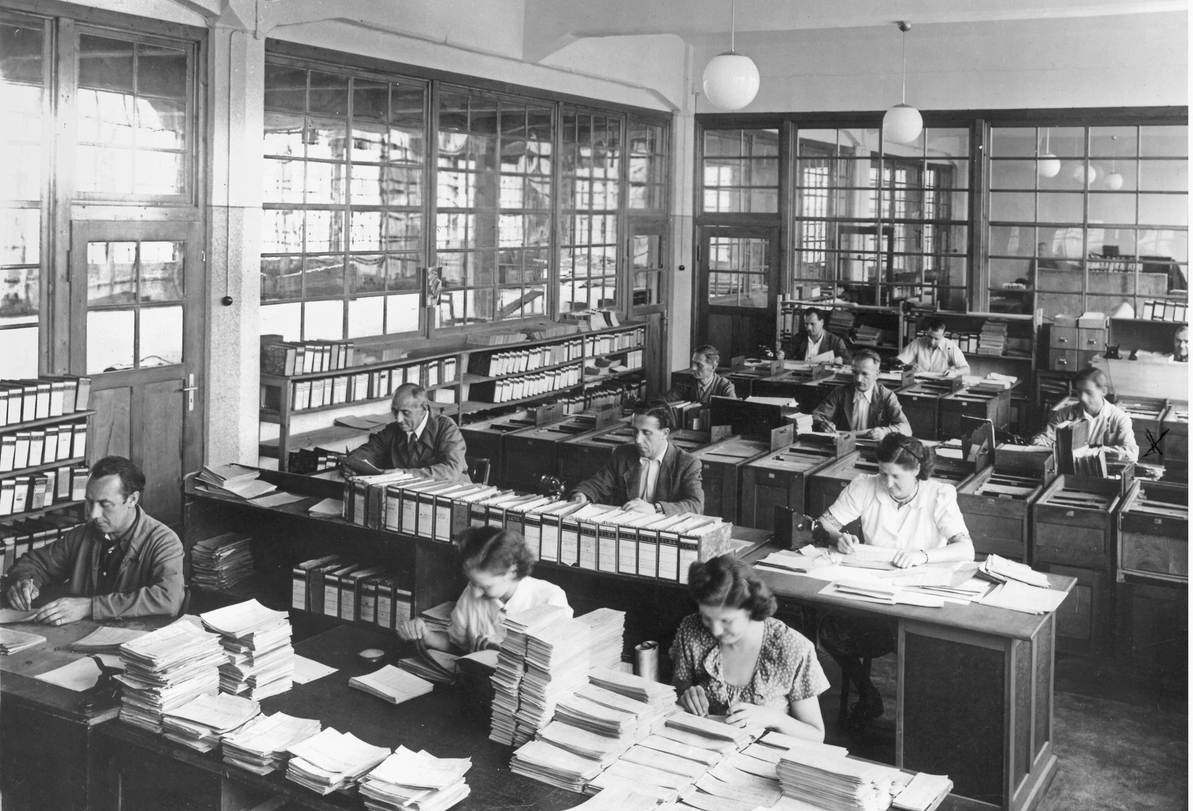


At home on Juchostrasse
Resident at Holstein & Kappert
Up until 1938 there were three workers’ homes in the basement of the Holstein & Kappert administrative building: one each for the head driver and doorman and one for the foreman of the metalworking shop Heinrich Freudenthal. His daughter Irmtraud Hankeln, now 88, particularly remembers the long, black-and-white tiled floor. When she practiced her roller skating here, the long carpet was rolled up.
On the other side of the street was the Freudenthal’s garden which little Irmtraud tended together with her grandfather. “When the shepherd drove his flock along Juchostrasse, I’d use a little shovel to collect in little buckets what they’d left behind as a natural fertilizer for the garden,” she reminisces. She has vivid memories of the latter: she once jumped up and down on the wooden cover of the liquid manure barrel buried in the garden with such force that it broke and she found herself up to her neck in excrement!
Office work like on an assembly line
The old product costing analysis department at the Seitz-Werke
In order to deploy their workers efficiently, in the 1950s the various work processes were segregated. Office procedures were organized like work on the assembly line. The monotonous chores were the job of the women, with the men taking on the supervisory roles.
Although slow in coming, progress did eventually reach the Seitz-Werke in Bad Kreuznach, too, Erich Mörbel remembers, seated in the third row on the right in this photo from 1950: “We’d already converted payroll accounting to key punch cards by then but we had to wait until 1970 before the first IBM terminal was installed in our office.” The job of the product cost analysis department, of which the now 92-year-old was later head, was to assess the cost of finished projects in order to be able to calculate future projects more profitably.
Mörbel worked for the Seitz-Werke and SEN for a total of 48 years – bar four-and-a-half years when he was conscripted to the Reich Labor Service and then the army before becoming a prisoner of war.
Holstein & Kappert apprentices look for brides
Trip to the country by omnibus
One of the highlights of an apprenticeship in the 1950s was the annual summer factory excursion. This photo shows a group of Hakatists, as the employees at Holstein & Kappert liked to call themselves, arriving at the Seilersee in Iserlohn in 1954, less than 30 kilometers from the Dortmund plant.
“While our trainers were dressed up to the nines, we young men had all agreed to wear a straw hat,” remembers Karl-Friedrich Wecke, now 80 (squatting down in the front row on the far right). They not only affectionately teased their teacher Robert Schwarz (fifth from the left in a double-breasted suit) about this all day, but also gave frequent renderings of what was then his favorite song: “Ham se nich ’ne Braut für mich” (“Haven’t you a bride for me?”), then a popular hit by Bully Buhlan. Wecke can now no longer remember which of the young men was the first to find himself the lady of his dreams.



















